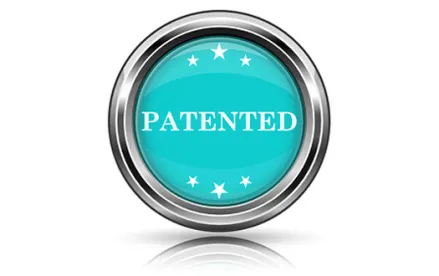The Federal Circuit in Amgen Inc. v. Coherus Biosciences Inc. affirmed a district court decision that once certain subject matter is clearly and unmistakably surrendered during prosecution, the patentee is barred from asserting an infringement claim under the doctrine of equivalents.
Amgen’s patent number 8,273,707 claims methods of purifying proteins using hydrophobic interaction chromatography (HIC). An HIC column separates proteins based on hydrophobic interactions between the hydrophobic groups of the protein to be captured and hydrophobic groups of the HIC column. Once impurities are washed out, the proteins are usually released by decreasing the salt gradient. The ‘707 patent provides combinations of salts useful for increasing the “dynamic capacity” of an HIC column, allowing more protein to be loaded onto the column without loss, compared with the dynamic capacity of the column using separate salts alone.
During prosecution of the application that resulted in the ‘707 patent, the examiner rejected the claims as obvious in view of the “Holtz” reference, which disclosed several salts that can be used to improve hydrophobic interactions between a protein and the HIC column. Amgen responded that Holtz does not teach 1) a combination of salts, 2) combining the particular salts recited in the claims, and 3) the use of salts to improve dynamic capacity of the column. Furthermore, Amgen submitted a declaration which emphasized that it is specifically the particular salt pairs claimed that greatly improved cost-effectiveness of commercial manufacturing and dynamic capacity of the column. In their second and final response, Amgen reiterated that Holtz does not disclose a combination of salts or enhancement of dynamic capacity. Amgen did not repeat its emphasis on the particular combination of salts disclosed in the claims. The examiner allowed Amgen’s claims after receiving Amgen’s second response.
Generally, the doctrine of equivalents allows for patent infringement when a product, process, etc. does not literally infringe a claim but is an equivalent of the claimed invention. Amgen sued Coherus for infringing the ‘707 patent under the doctrine of equivalents arguing the salt combination used in Coherus’s process was an equivalent even though it did not match any of the three expressly claimed salt combinations in the ‘707 patent.
The district court noted that during prosecution, Amgen distinguished Holtz by arguing that Holtz did not disclose “one of the particular, recited combinations of salts.” Based on this, the court determined that Amgen “clearly and unmistakably – and indeed repeatedly - indicated to competitors that it surrendered processes using combinations of salts different from the ‘particular combinations of salts recited in the…claims.’” The court concluded that “prosecution history estoppel bars Amgen from now attempting to reassert surrendered ground involving other combination of salts.”
On appeal, the Federal Circuit affirmed the district court decision that “Amgen clearly and unmistakably surrendered all salt combinations other than the ones specifically recited in the claims,” and is therefore barred from asserting an infringement claim against Coherus under the doctrine of equivalents. The Court rejected Amgen’s argument that it distinguished Holtz more broadly on the ground that Holtz does not disclose any combination of salts, and that the “particular salts” argument was not used in the final submission before allowance. The Court stated that “while Amgen did assert multiple reasons for why Holtz is distinguishable, [its] precedent instructs that estoppel can attach to each argument,” and “separate arguments can create separate estoppels as long as the prior art was not distinguished based on the combination of these various grounds.” The Court also held that “there is no requirement that argument-based estoppel apply only to arguments made in the most recent submission before allowance.”
The decision in Amgen helps highlight that where an applicant relies on multiple arguments to distinguish its invention from prior art, the separate arguments can create separate estoppels, as long as prior art was not distinguished based on the combination of these various grounds. Furthermore, there is no requirement that argument-based estoppel apply only to arguments in the most recent submission before allowance. Arguments made at any time during prosecution, whether or not they are ultimately required for allowance, may create an estoppel.





 />i
/>i
